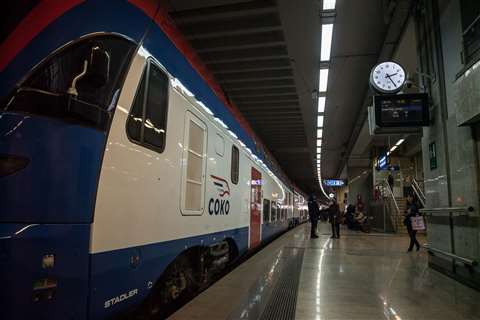Serbia tables expansion of EU’s Corridor X rail network
29 March 2023
Serbia has announced plans to invite a number of Southeastern European nations to collaborate on the expansion of a high-speed rail network.
 A high-speed train waits at a recently-upgraded station in Belgrade. Photo: Jerome - stock.adobe.com
A high-speed train waits at a recently-upgraded station in Belgrade. Photo: Jerome - stock.adobe.com
Serbia’s transport minister, Goran Vesic, made the announcement following a meeting in Budapest with his Hungarian counterpart, Janos Lazar, who he met for talks on a Budapest-Belgrade rail connection.
Connecting the two capitals falls within the remit of the EU’s Corridor X initiative – a plan to upgrade various infrastructure connections between Salzburg in Austria and Thessaloniki in Greece.
As such, the Budapest-Belgrade connection will receive a total of €1.1 billion in financing from the European Investment Bank (EIB).
The two men exchanged thoughts on broadening the rail connection, bringing Albania, North Macedonia, Greece and Turkey into the discussion.
In total, Corridor X, which is part of the EU’s Economic and Investment Plan (EIP) for the Western Balkans, could call for the mobilisation of up to €30 billion in public and private investment.
The rapid expansion of infrastructure in the region is seen as crucial for its integration with the EU, aiding future trade and inward investment.
In Serbia alone, the Corridor is expected to account for more than 870km of rail track, which represents 23% of the country’s entire rail network.
STAY CONNECTED



Receive the information you need when you need it through our world-leading magazines, newsletters and daily briefings.
CONNECT WITH THE TEAM








